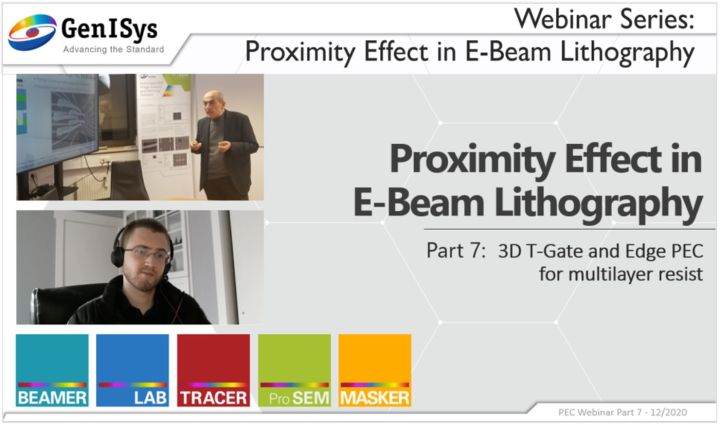Part 7 - 3D T-Gate and Edge PEC for multilayer resist
Speaker:
Doc Daugherty, Nezih Ünal - GenISys GmbH
Takeaways:
- PEC Multi-Layer resist process
- Challenge of lateral development for small gate sizes
- Overdose – Undersize (ODUS) for gate
- Correction model and parameter
- Results
Summary of the Webinar:
-
Single layer resist binary correction is adjusting exposure doses for one exposure layer to get the one resist edge to the target layout edge. Processes with multiple (typically 2 or 3) resist layer with different sensitivities on top of each other.
-
The 3D Edge PEC correction is considering multiple energy targets for proximity effect correction. The exposure doses are adjusted for both layers, so that after development the resist edges match with the different target layout layouts.
-
Application for such correction are controlled undercut for lift-off, bridges for interconnection, or Dolan Bridge for creating Josephson Junction. The edge PEC can be used also for T-Gate, but the foot gets oversized due to lateral development
-
The 3D T-Gate correction is dedicated for advanced T-Gate application, correcting for the oversize of the foot by under-sizing and leaving an unexposed area between foot and wing. The correction also enables to over-dose the foot by a dose factor (e.g. 2x), which leads to stronger under-size and thereby a better control of gate size. Applying a multi-pass for the foot helps additionally to improve the gate quality.
-
Additional modulation of the wing layer enables new types like asymmetric T-Gate, Gamma-Gate or V-Gate.

